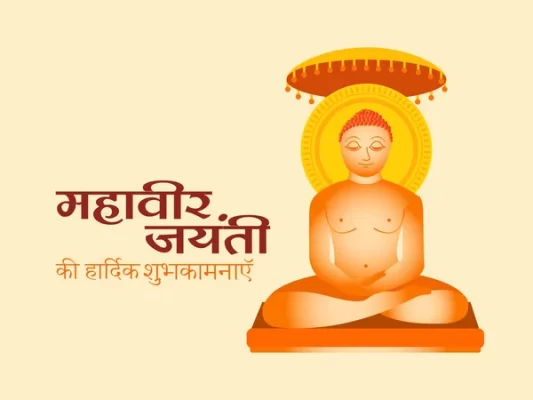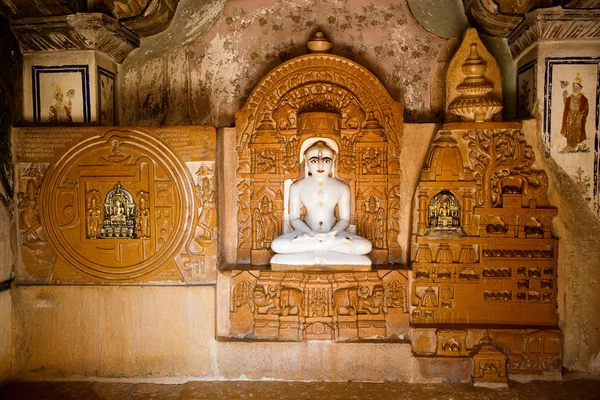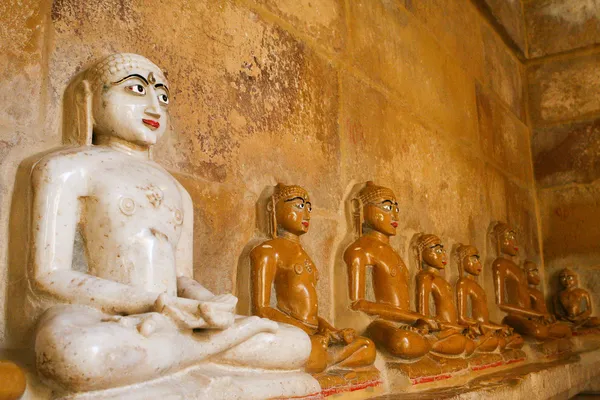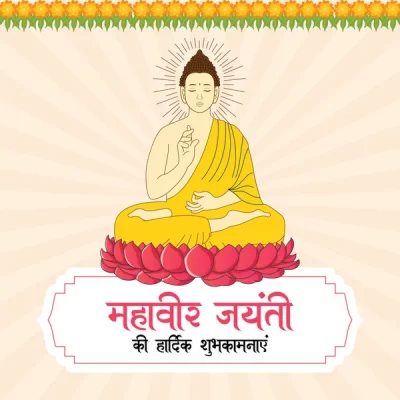noun. Jain·ism ˈjī-ˌni-zəm. ˈjā-: a religion of India originating in the sixth-century B.C. and teaching liberation of the soul by right knowledge, right faith, and right conduct. Mahavira was called ‘Jina’ meaning the big winner and from this name was derived the name of the religion.

Today, when we are celebrating “Mahavir Jayanti,” it’s time to give thought to the message given by Bhagwan Mahavir. Mahavir Jayanti is predominantly a Jain festival and to get the true essence of it, you can visit any of the Jain temples.
My curiosity about Jainism evolved after visiting “Dilwara’s Jain temples” in Mount Abu a few years ago, which are architectural marvels. The peace, the serenity, the divinity felt there was just unmatchable. One of the most peaceful communities, Jains are known for its charitable work and love for all living beings on the planet. Its followers lead a disciplined and pious life and propagate universal brotherhood. They excel in many fields and believe in good sanskaras and education.
Mahavir Jayanti is celebrated by the Jain community to observe peace, and harmony and to spread the teachings of Mahavira, the 24th Tirthankara of Jainism, Mahavir Jayanti marks the birth anniversary of the founder of Jainism or Mahavir Janma Kalyanak and is one of the most auspicious festivals for the Jain community.
Mahavir Jayanti is a festival that holds a major significance in the Jain community and is celebrated with splendour in India and across the world. The festival commemorates the birth of Lord Mahavira. As per Jain mythology, Lord Mahavira is the 24th Tirthankara of Jainism. This year, Mahavir Jayanti will be celebrated on the 14th of April, 2022.

What is the story of Mahavir Jayanti?
Lord Mahavir left his kingdom to seek greater truth and attain Nirvana and abandoned all worldly pleasures and walked the path of an ascetic at the age of 30. Mahavir Jayanti is the day of Lord Mahavir’s birth and is considered one of the most auspicious days in the country.
As per Jain texts and religious scripts, Lord Mahavira took birth on the 13th day of the waxing moon on the Chaitra month (Hindu calendar) in Kundalagrama (now Kundalpur) Bihar, a few kilometres from Patna. At that time, Vaishali was the capital of the state.
Lord Mahavir preached for 30 years and attained Moksha (liberation) in the 6th century BCE, although the year varies by sect. Historically, Mahavira, who revived and preached Jainism in ancient India, was an older contemporary of Gautama Buddha.
Jainism’s main teaching is that all living beings should be treated with utmost care and respect.
Jain monks, after positioning themselves in the sublime state of soul consciousness, take five main vows: ahiṃsā (non-violence), Satya (truth), asteya (not stealing), brahmacharya (chastity), and aparigraha (non-possessiveness).
This is believed that Mahavira’s mother had 14 dreams, which were later interpreted by astrologers all of whom said that Mahavira would either go on to become an emperor or a sage (Tirthankara). When Mahavira reached 30, he left his throne and family in search of truth. He lived in exile for 12 years as an ascetic. During this time, he preached non-violence and treated everyone with reverence. He got his name “Mahavira” after showing exceptional skills in controlling the senses. It is widely believed that when Mahavira was 72, he attained enlightenment (Nirvana).

The festival is celebrated is to bring peace and harmony by spreading the teachings of Lord Mahavira. A procession is carried out in the form of a “Rath yatra” with Lord Mahavira’s idol neatly placed on the top. The decoration of Jain temples is done with flags while the Jains offer food and clothes to the needy. Jainism vehemently opposes animal slaughter and hence donations are made to stop animal killings.
Other than charitable acts, prayers are also offered in the temples of Lord Mahavira. Some other devotes often engage in mediation—a practice championed by Mahavira. Old and famous Jain temples witness a huge surge in devotees today. The teachings of Mahavira and Jainism are recited by monks.
Mahavir Jayanti is predominantly a Jain festival and to get the true essence of it, you can visit any of the Jain temples.
I recently read somewhere about three keys of transcendence of Jainism. As laid down in the teachings of Jainism, Acharya Vijay Lakshmanurishvar became a votary for ahimsa, non-violence. This universal philosophy was simplified into practical tenets through his lectures and books. His Atmattavavichar brings together dynamic concepts such as atman: soul, karma-action, and dharma duty in a step-by-step easy to understand way. These teachings were originally aimed to empower and enable sadkak as well as the householder to progress unhindered on the path of spiritual siddhi, transcendence.

